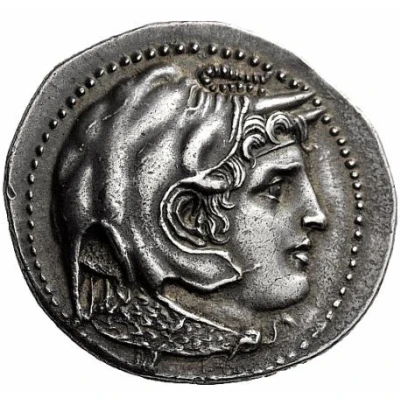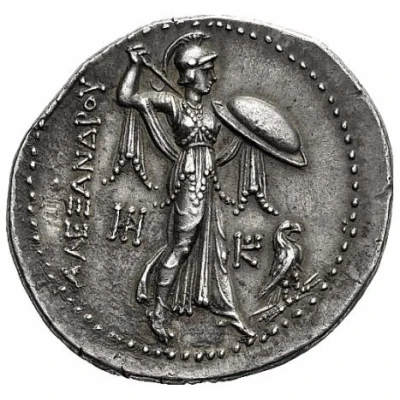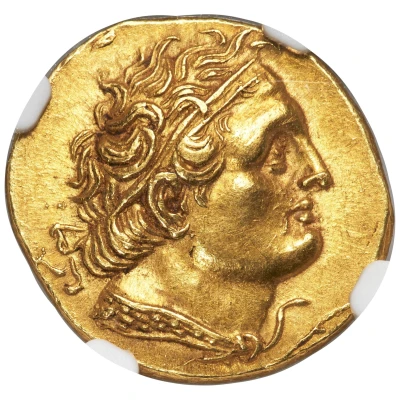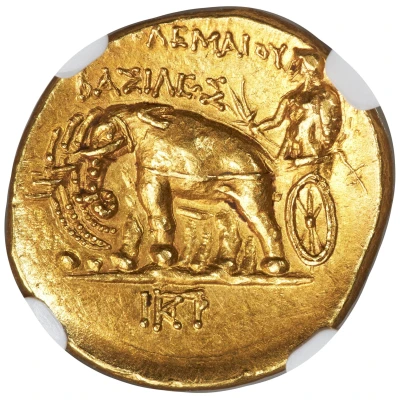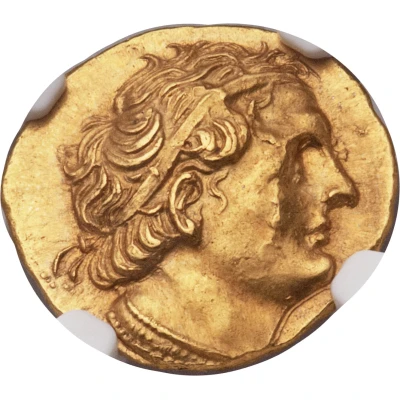
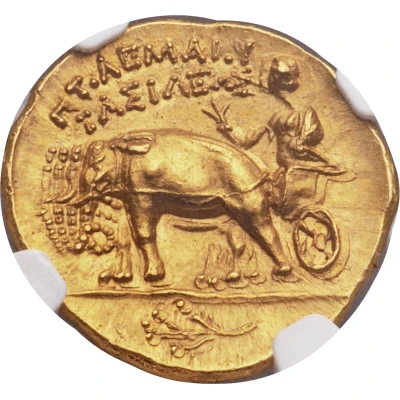

© Heritage Auctions
Stater - Ptolemy I Soter Euhesperides 299 BC - 294 BC
| Gold | 7.1 g | 19 mm |
| Issuer | Ptolemaic Kingdom (Ptolemaic Kingdom (305 BC - 30 BC)) |
|---|---|
| King | Ptolemy I Soter (305 BC - 282 BC) |
| Years | 299 BC - 294 BC |
| Value | Gold Stater (24) |
| Currency | Ptolemaic drachm (first reform of Ptolemy I Soter, circa 306 – 294 BC) |
| Composition | Gold |
| Weight | 7.1 g |
| Diameter | 19 mm |
| Shape | Round (irregular) |
| Technique | Hammered |
| Demonetized | Yes |
| Updated | 2024-10-09 |
| Numista | N#129715 |
|---|---|
| Rarity index | 95% |
Reverse
Deified King Alexander III, wearing aegis draped over left shoulder, holding thunderbolt in right hand and reins in left hand, riding left in chariot pulled by four elephants. Laurel branch in exergue.
Script: Greek
Lettering: ΠTOΛEMAIOY BAΣIΛEΩΣ
Translation: Kind Ptolemy.
